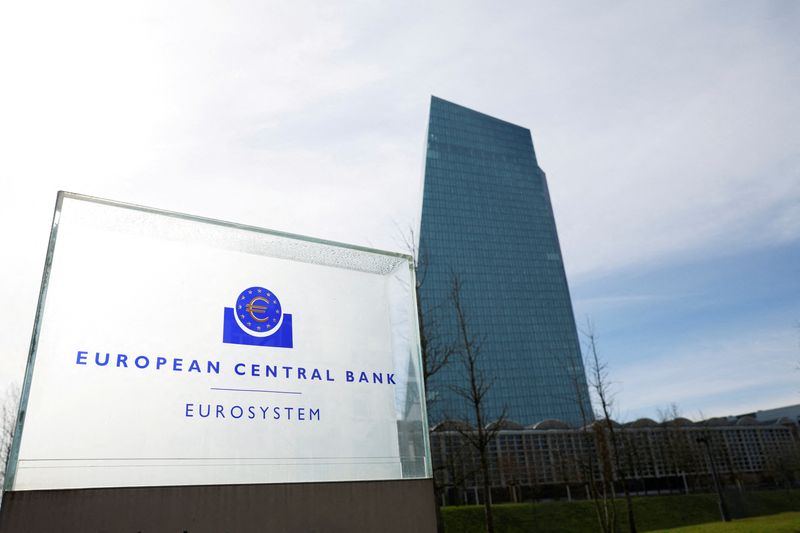G10 central banks hit rate plateau in October, emerging markets diverge
2023.11.01 02:38

© Reuters. FILE PHOTO: A view shows the logo of the European Central Bank (ECB) outside its headquarters in Frankfurt, Germany March 16, 2023. REUTERS/Heiko Becker/File Photo
By Karin Strohecker and Sumanta Sen
LONDON (Reuters) – Central banks across major developed economies in September delivered no rate hikes for the first time since January 2022 while emerging markets extended their split between easing in Latin America and much of central Europe and tightening in Asia.
October saw five of the central banks overseeing the 10 most heavily traded currencies hold rate setting meetings, with policy makers at the Bank of Japan, the European Central Bank, the Reserve Bank of Australia, the Reserve Bank of New Zealand and the Bank of Canada opting to keep their benchmarks unchanged, Reuters data showed.
Central banks in Sweden, Switzerland, Norway, Great Britain and the United States held no rate setting meetings.
That compares to September, where three major developed central banks delivered a last-gasp set of rate hikes, which took 2023 the year-to-date tally for G10 central banks to a total of 1,150 bps across 36 hikes.
While inflation was still high compared to central banks’ targets, a rapid recent rise in global bond rout had changed the backdrop significantly thanks to the rise in yields at the long end of the yield curve across both developed and emerging markets, analysts said.
“The higher yields may be doing some of the tightening work for the Fed, the Bank of England and the European Central Bank, and a pause from central bankers to monitor the impact of previous hikes on the economy is increasingly likely,” said Fabiana Fedeli, chief investment officer at M&G Investments.
The U.S. Federal Reserve – which will announce its interest rate decision later on Wednesday – was most likely the closest to the end of its rate hike cycle, Fedeli added.
Meanwhile, diverging rate trajectories continued to be on display in emerging economies where 12 out of the 18 central banks in the Reuters sample held meetings in October.
Latin America and central and eastern Europe are at the forefront of the easing cycle, with Chile, Hungary and Poland extending their rate cutting cycles to lower benchmarks by a cumulative 150 basis points (bps).
“Cuts are returning swiftly because the hiking cycle was arguably too fast and too furious for some,” said credit strategist Barnaby Martin at BofA Securities, adding emerging markets had last seen rate cuts akin to the current ones during the summer of 2020 when policy makers battled the fallout from the COVID-19 rout.
Meanwhile, Asian central banks were still in their tightening cycle with both Indonesia and the Philippines raising rates by 25 bps each. And Russia and Turkey – both battling pressures on their currencies due to idiosyncratic stories rather than the global backdrop – lifted benchmarks by 200 bps and 500 bps respectively.
Central banks in Brazil, Mexico, South Africa, Thailand, Malaysia and Czech Republic did not meet in October.
The total tally for the year on rate hikes stood at 4,225 bps through 34 hikes, while policy makers also delivered 570 bps of rate cuts across 11 moves.








